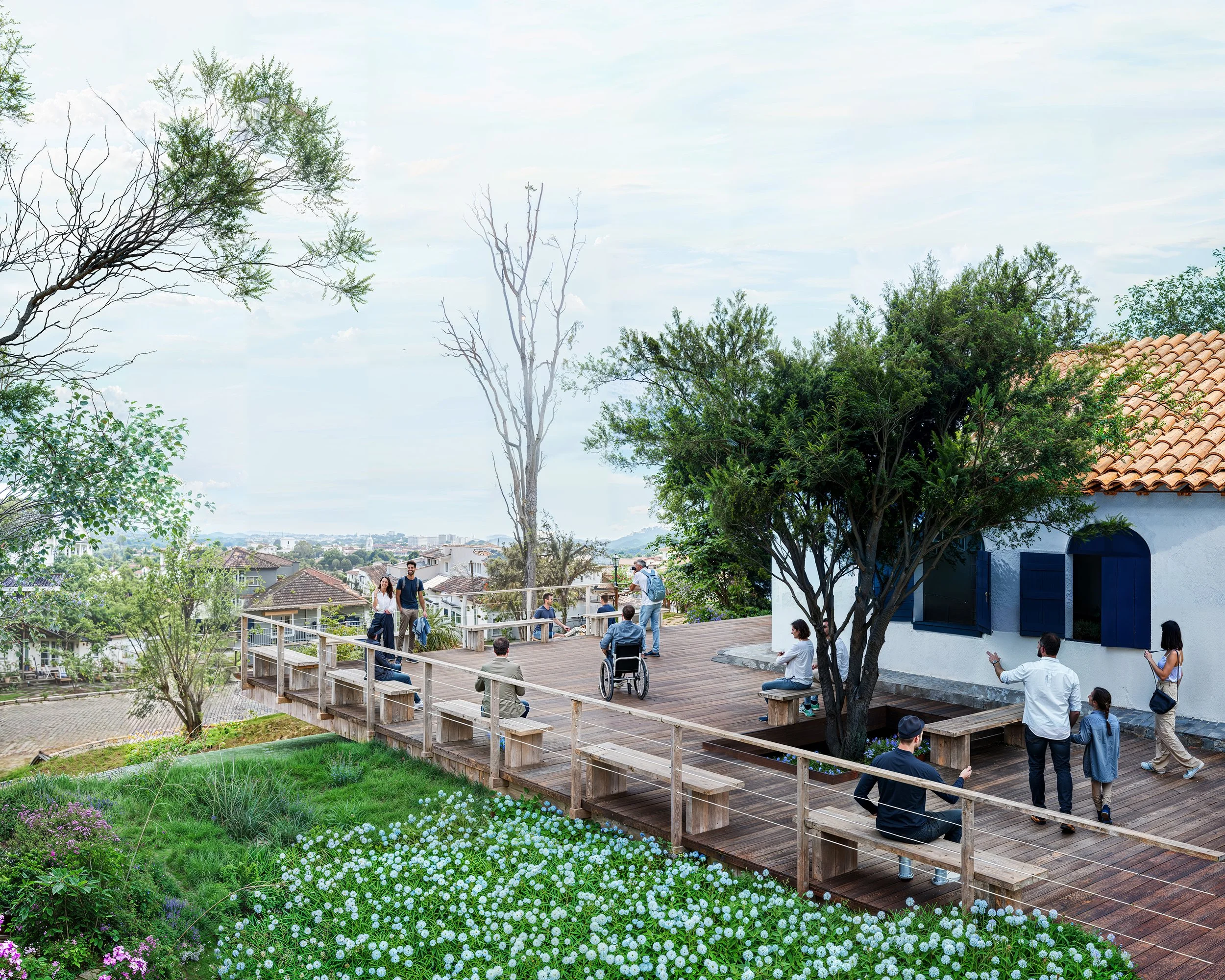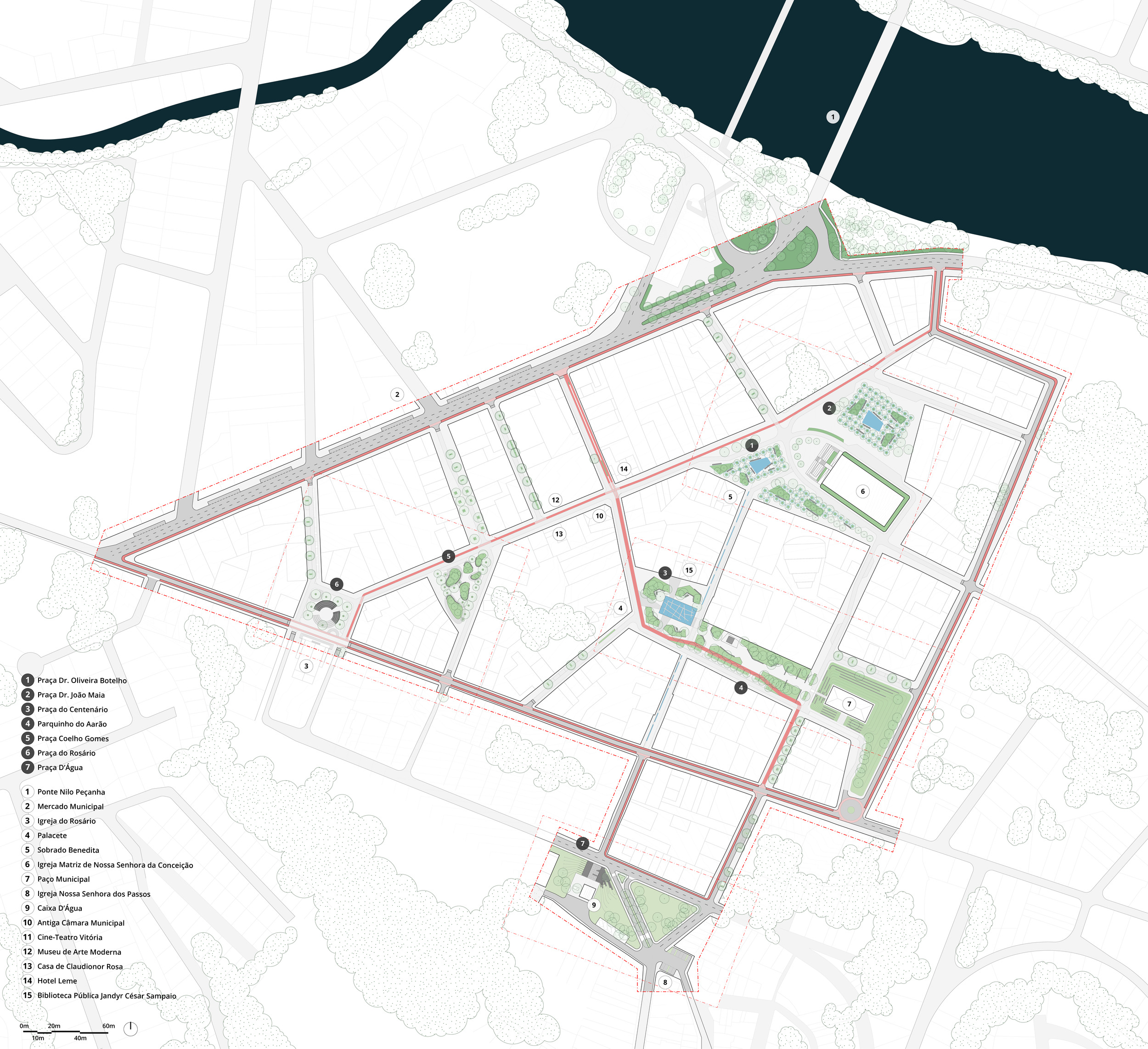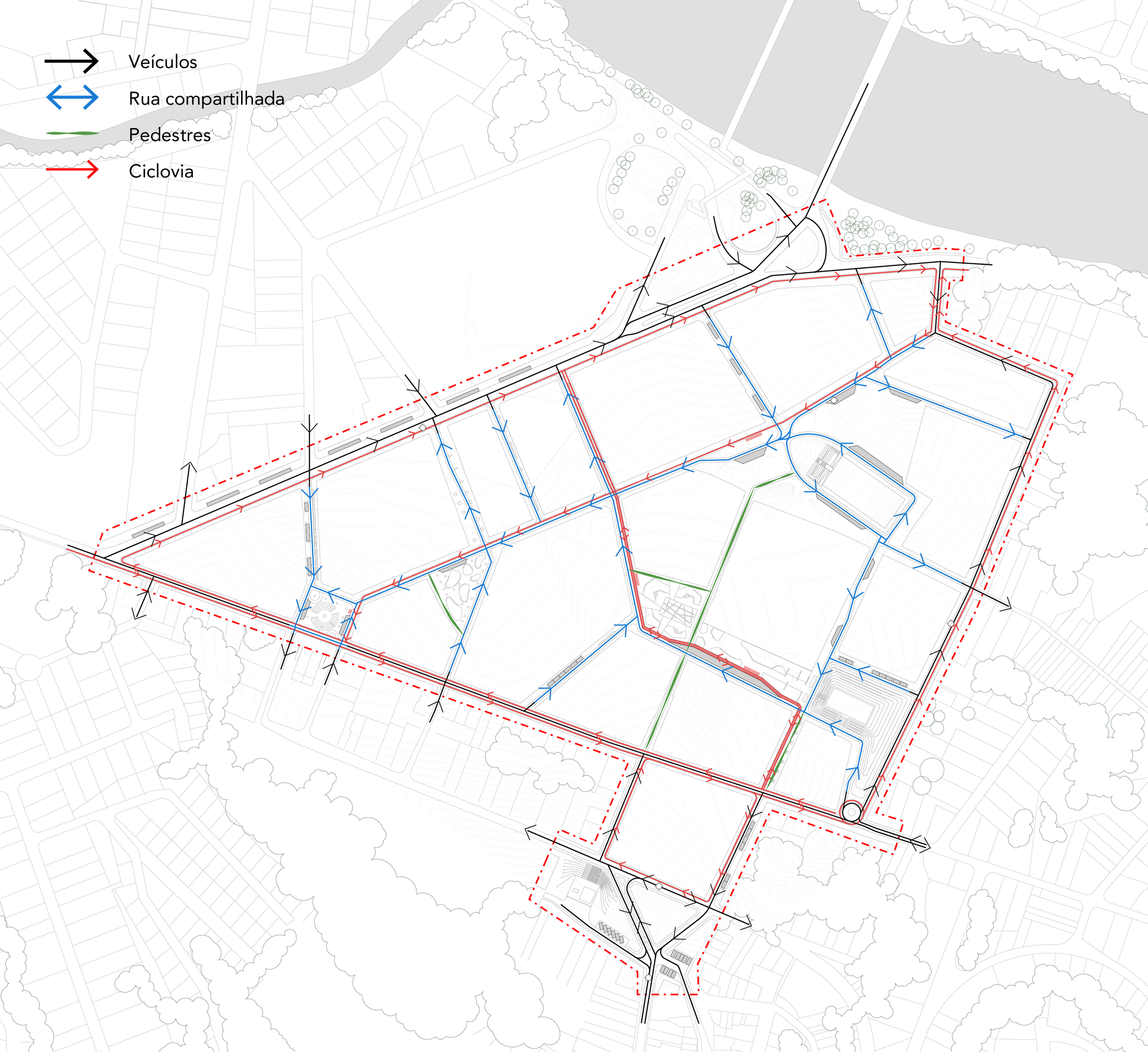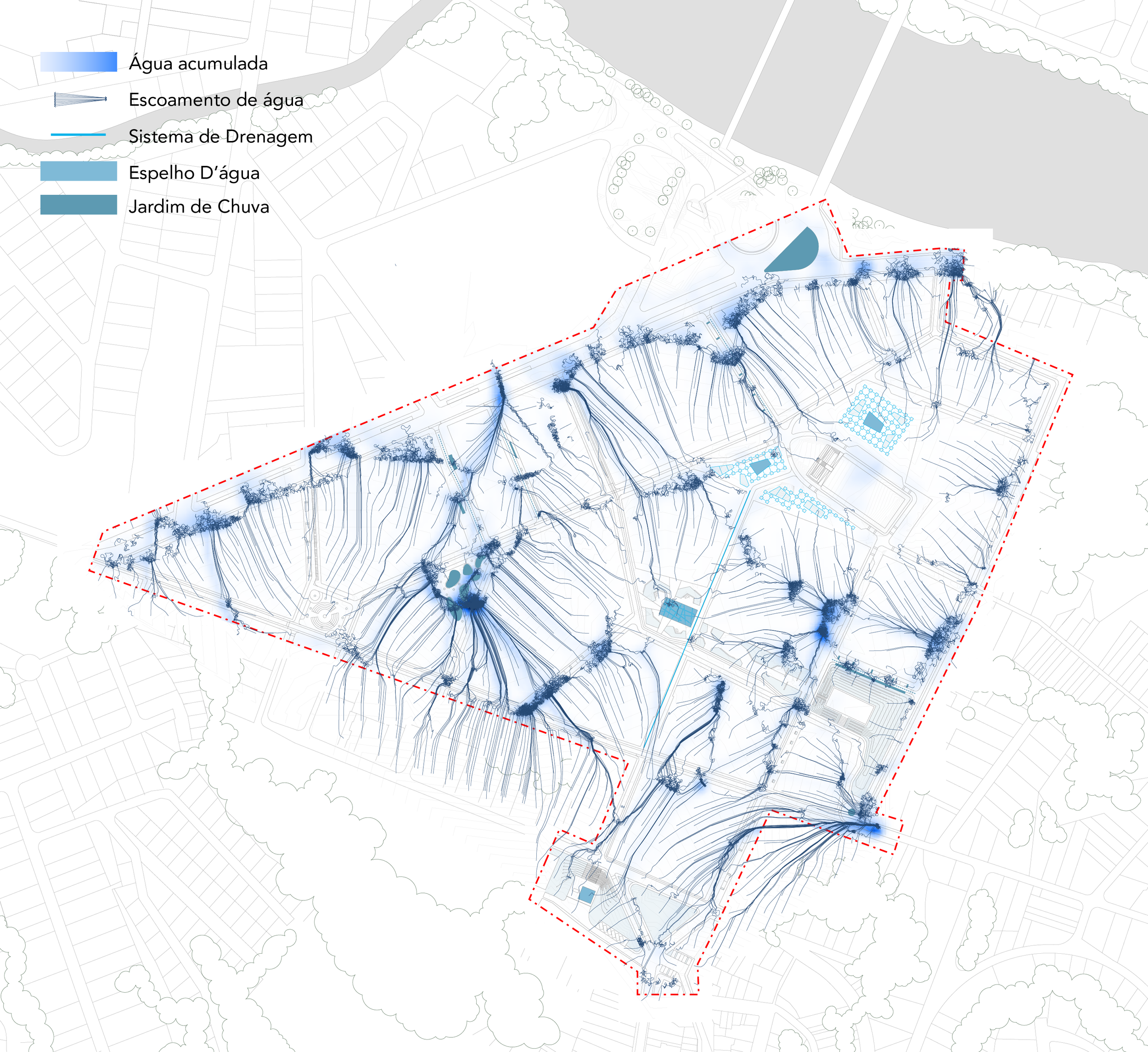Resende’s Historic Center
-
The project for the revitalization of Resende’s historic center proposes an urban transformation that places landscape, memory, and everyday life at the core of the urban design strategy. Located in the Paraíba do Sul Valley, the city has played a strategic role in Brazilian history—from the coffee cycle, which shaped its economy and built heritage, to the later wave of industrialization that reconfigured its territory. Today, faced with contemporary challenges, Resende has the opportunity to renew its regional centrality through an urban environment that values heritage, biodiversity, and the human scale.
Like other historic centers along the Paraíba do Sul River, Resende faces common dynamics: population decline paired with expansion into new neighborhoods, deterioration of the urban image, loss of heritage, and heavy monofunctionality. Yet these challenges can be transformed into opportunities by integrating the city’s historical richness with the demands of contemporary life.
The project proposes the creation of a network of public spaces oriented toward pedestrians and cyclists, capable of fostering social interaction, economic vitality, and cultural expression. The proposal starts with a precise reading of the topography—the valley shaped by the river and the mountains framing the horizon—to structure a continuous system of public spaces.
The intervention is organized into three primary levels, connecting collective uses with environmental performance. At the highest elevation, mineral surfaces, large-canopy vegetation, and contemplative spaces predominate. The intermediate level prioritizes leisure and physical activity, with greater vegetation cover and playful interactions with water. At the lowest elevation, Dr. Oliveira Botelho Square operates as a point of convergence, linking woodland and floodable plaza, reaffirming its role as the city’s main public space.
By designing spaces as ecosystems, the project recognizes that urban nature cannot be reduced to appearance. It must emerge from intentional design action, measured by its capacity to make the city more livable and to generate biological, social, and aesthetic value.
The holistic approach adopted positions Resende as a replicable model for other historic urban centers in the region. Key strategies include incorporating play into everyday life—promoting health, learning, and social interaction; reducing exposure to pollutants through green corridors; and implementing universal infrastructure that ensures full accessibility, from strollers to people with reduced mobility.
By combining cultural heritage, sustainable mobility, and ecological design, the project repositions Resende’s center as a reference in urban revitalization, capable of inspiring new ways of inhabiting the Paraíba Valley. The city thus reaffirms its historic role—now oriented toward a resilient, inclusive future deeply connected to its landscape.
By interweaving memory, ecology, and mobility into a single urban structure, Resende becomes a model for other Brazilian historic centers seeking to reinvent themselves without relinquishing their identity. More than a physical intervention, the project is an invitation to inhabit the city fully—where heritage is not only a memory, but a foundation for imagining, together, the future Resende deserves.
-
National Competition - Honorable Mention
Year: 2025
Location: Resende, RJ, Brazil
Total Area: 55.600 m2 -
Competition Team: MATTERIA + Ishaan Kumar
Authors: Lucas Coelho Netto, Ishaan Kumar
Collaborator: Augusto Zamperlini

















